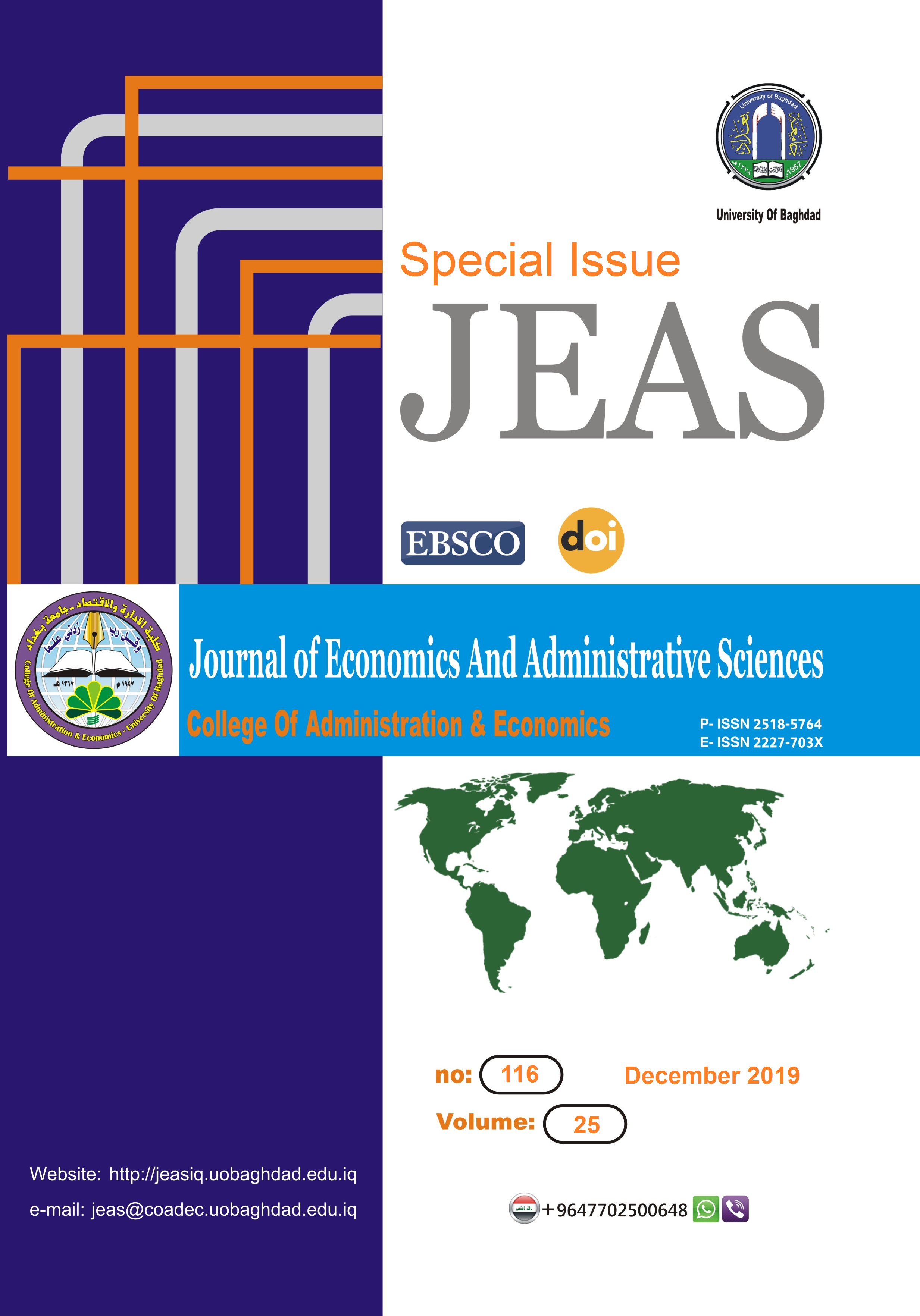The Reflection of the application TD-ABC approach on profits persistence Applied study in the General State of Hydraulic Industries Factory of Plastic*
DOI:
https://doi.org/10.33095/jeas.v25i116.1796Keywords:
Time-Driven Activity-Based Costing Approach, profits persistence traditional Approach of allocating manufacturing factory overhead., مدخل محاسبة الكلفة على اساس النشاط الموجه بالوقت، ديمومة الارباح ، المدخل التقليدي لتخصيص التكاليف الصناعية غير المباشرةAbstract
The interest of many companies has become dealing with the tools and methods that reduce the costs as one of the most important factors of successful companies, and became the subject of the attention of many economic units because of the impact on the profits of company, and since the nineties of the last century the researchers and writers gave great attention to this subject, especially in light of the large competition and rapid developments in cost management techniques, as well as the wide and significant change in production methods that have been directed towards achieving customer satisfaction, all this and more driven by economic units in all sectors whether it is service or productivity to find methods that would reduce the costs and thereby increase the profits. As well as achieving a market share compared to economic units operating in the same sector.
This study seeks to apply the method of reducing the manufacturing factory overhead costs through the use of time-driven activity-based costing. The aim of the research is to use this technique and to determine the effect of this method in measuring the profit persistence of the company. The traditional method used in the company the research sample to determine the indirect costs and the extent of its impact on the measurement of the profit persistence, the definition of the concepts and characteristics of the method of cost-based activity and the cost method based on time-driven activity and justifications applied to companies, so, the research problem was that the traditional method used by the company the research sample in determining manufacturing factory overhead costs is not fair and objective as it builds the actual basis for determining manufacturing factory overhead costs at the level of the factory as a whole. Consequently, it does not represent cost-effective information that reflects the cost-effectiveness of the plant in the sample of the research and in a manner that affects the profitability of the company the research sample and thus in measuring the profit persistence.
Downloads
Published
Issue
Section
License
Articles submitted to the journal should not have been published before in their current or substantially similar form or be under consideration for publication with another journal. Please see JEAS originality guidelines for details. Use this in conjunction with the points below about references, before submission i.e. always attribute clearly using either indented text or quote marks as well as making use of the preferred Harvard style of formatting. Authors submitting articles for publication warrant that the work is not an infringement of any existing copyright and will indemnify the publisher against any breach of such warranty. For ease of dissemination and to ensure proper policing of use, papers and contributions become the legal copyright of the publisher unless otherwise agreed.
The editor may make use of Turnitin software for checking the originality of submissions received.





















